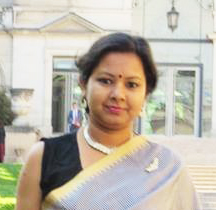
Rajlaxmi Basu
Institute of Hematology and Transfusion Medicine, India
Title: Going towards few extra miles to unveil the health status of sewage workers of a megacity, Kolkata
Biography
Biography: Rajlaxmi Basu
Abstract
This present report is about the couple of genetic polymorphism CYPIA1 and GSTT1, GSTM1 study in addicted male sewage workers. Additionally, whole blood selenium (Se) concentration and intensity of DNA damage in each polymorphic group population were also examined. Results indicate that about 50.72% of total number of experiment subject (N=138) were with normal genotype and rest are with polymorphism of at least one gene. Here population group consisting of GSTT1 null, GSTM1 null had the most elevated whole blood Se concentration and it is significantly (p<0.05) higher than all other group. Further another group comprising with GSTM1 null, CYPIA1 mutated (heterozygous/ homozygous) with highest degree of intensity of DNA damage which is statistically significant (p<0.05) than any other discussed group. From this study it is clear that these couple of group with a genetic makeup of GSTT1 null, GSTM1 null and CYPIA1 wild type and GSTM1 null, CYPIA1 mutated (heterozygous/ homozygous) are the most alarming conditioned group. Here population with normal genotype was considered as control because an intra-group study has performed for a patch of occupationally exposed workers so they are matched in every respect and a comparison has performed and reported about the essential elemental status like Se and intensity of DNA damage. This is important for these study population to investigate few extra health status coupled with genetic makeup.

